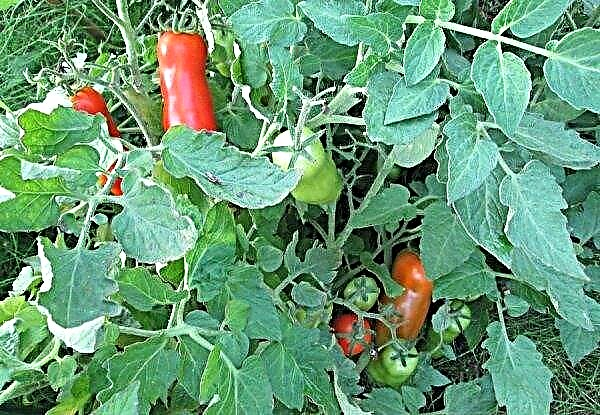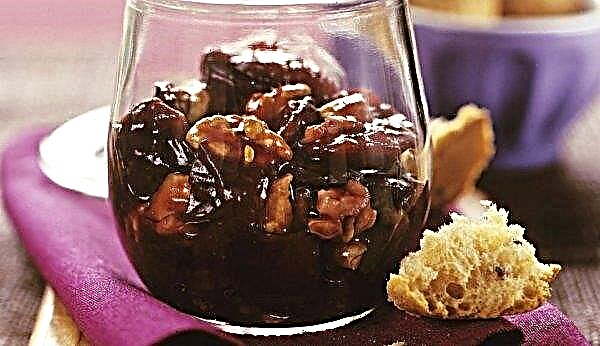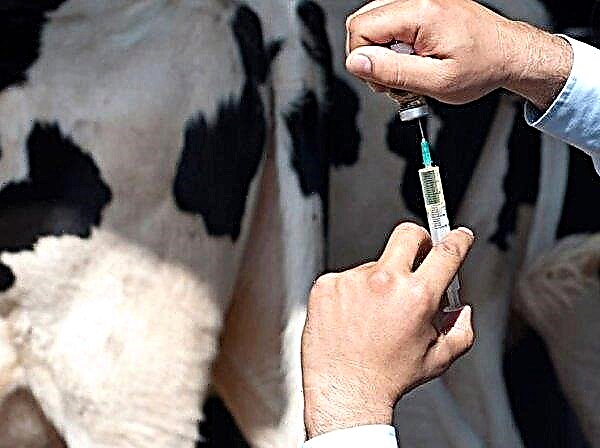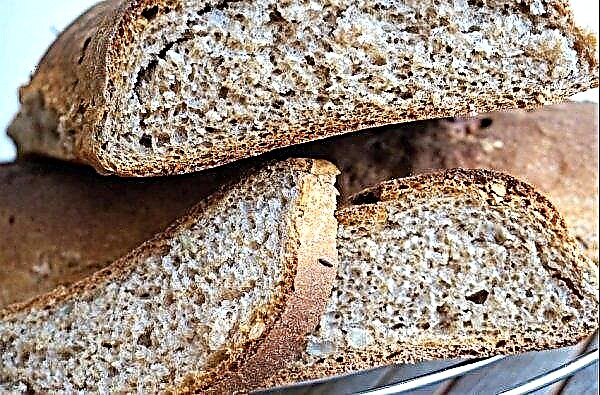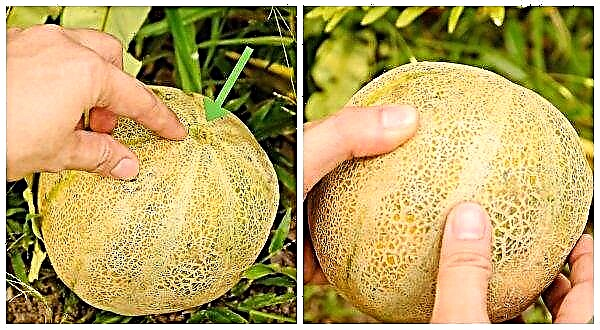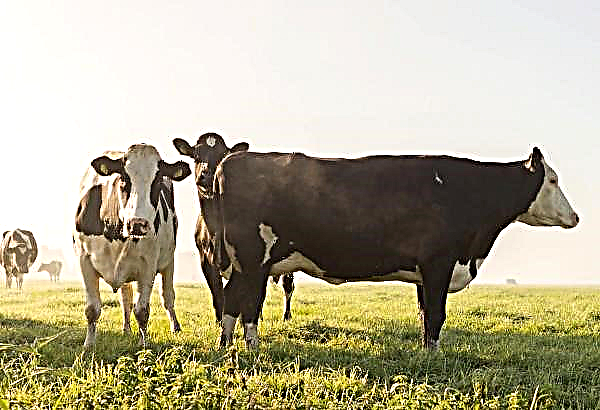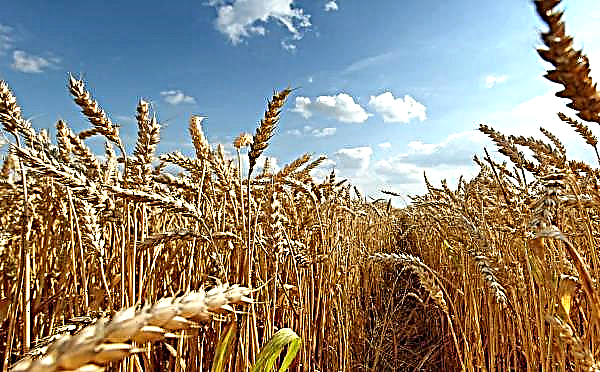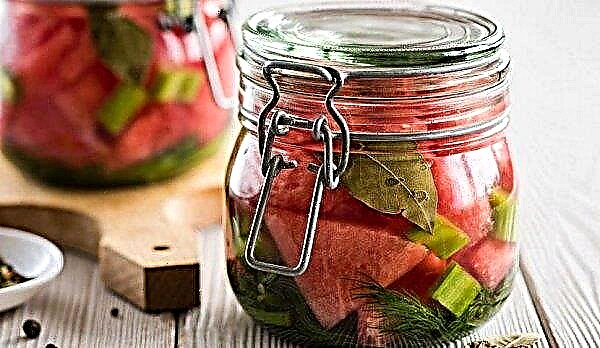Eggplant for our latitudes - the culture has long been familiar and often grown both in open ground and in the greenhouse. This article discusses the causes of yellowing of eggplant foliage in a greenhouse, as well as methods for solving the problem.
Why do eggplants turn yellow in a greenhouse?
One of the reasons for the color change of the leaves may be a painful adaptation of the seedlings to new conditions. This is possible if the composition of the soil is improperly selected in the greenhouse. The soil for the successful cultivation of vegetables should be loose, with good moisture and air permeability. Also, the cause may be the lack of hardening before landing or improper care.
Did you know? The Turkish legend says: the first imam in the country, having tasted an eggplant dish, lost consciousness with delight. Until now, this dish is called the “Imam's Joy” in local cuisine.
Incorrect seedling care
The thermophilic culture needs a special microclimate.
For active growth and development of seedlings provide the following conditions:
- temperature - the plant is grown at a temperature not lower than + 18 ° C, drafts are contraindicated;
- humidity - 60–70%, a culture in dry air needs spraying of the space around it;
- lighting - 12-14 hours, if necessary, artificial;
- watering - warm water + 20 ° C, in the first week every 3 days, the second week - every 5 days;
- top dressing - fertilize with an interval of once every 2 weeks, with balanced mineral formulations according to the instructions.
10 days before transplanting seedlings from room conditions into greenhouse plants, it is necessary to harden. To do this, the pots with bushes are carried out for 1-2 hours in fresh air, gradually increasing the stay in coolness up to a day.
Deviations from the norm cause a foliage reaction: it turns yellow completely or becomes stained, the plates twist.
Diseases and pests
Plant development can be affected by diseases that develop due to improper care.
The main signs of disease damage:
Pests can enter the greenhouse that eat the green parts of the plants or eat their juice, which leads to yellowing and wilting of the foliage. Pests are mainly attracted by increased humidity in the greenhouse, with the exception of the spider mite.
Signs of the appearance of insects and mollusks:
What to do and how to process eggplant
From diseases fungicides are used. There are drugs with a wide range of uses that are effective against a wide range of diseases. There are funds aimed at combating several diseases that have a specific nature of origin, for example, fungal or viral.
Pests must be controlled with insecticides or acaricides. These funds have a systemic or contact-intestinal effect, the drugs of the latest generation cope not only with adult insects, but also with their larvae and eggs.
Processing
Depending on the complexity of the problem and the growing season, plants use chemical or more gentle folk remedies.
Chemical
Chemicals are used during the growing season for both treatment and prevention.
Popular drugs:
- Fundazole - An effective drug with a wide spectrum of action, it is recommended for spotting. To obtain a solution of 10 g of the product, 10 liters of water are diluted; to treat a plot of 10 m², 1.5 liters of solution is necessary. In total, 2–4 procedures are performed with an interval of 2 weeks;
- Gamair - the drug is used for spraying with Fusarium, the solution is prepared at the rate of 2 tablets per 1 liter of water, it is used three times with an interval of 7 days;
- Alirin-B - from mosaic rust, spraying with a solution of 2 tablets per 1 liter of water is used. Repeated procedure - after 7 days, in total 3 sprayings if necessary;
- Arrivo - aphids, whiteflies. Spray the area in a proportion of 1.5 ml / 10 l of water. If necessary, repeat after 14 days. You can protect yourself from whiteflies by hanging sticky traps;
- Akarin - spider mite. Spray with the drug 2 ml / 1 l of water;
- Apache - Colorado potato beetle. An effective preparation is 0.5 g / 1 l of water by spraying.

Folk
The defeat of the disease or the attack of the pest can catch the plant at the time of flowering or fruiting. During these periods, it is forbidden to handle plantings with toxic chemicals, therefore, alternative methods of control are used.
The most effective of them:
- nettle infusion (1 kg / 10 l of water), insist 12 hours, strain. Spraying increases immunity, protects against late blight;
- horsetail infusion (1 kg / 10 l), insist 12 hours, strain. Effective for protection against fungal diseases;
- broth of nettle and horsetail used for prevention and treatment in the early stages of rust, for this, the infusion is boiled for 20 minutes, cooled and sprayed;
- garden fern infusion (1 kg / 10 l) effectively repels slugs. Mollusks are collected manually to protect the greenhouse from penetration, walnut shells are scattered in the aisles;
- wood ash dusting planting, protecting against aphids and spider mites;
- decoction of wormwood, marigold, tansy and chamomile (1 kg / 5 l of water) kills most insects, including the larvae of the Colorado potato beetle;
- garlic broth (1 kg of greens and prongs per 5 l of water). The concentrated broth is diluted 1: 5 with water and the planting is sprayed.
In addition to the use of infusions and decoctions, you can plant in the greenhouse between rows of cultivated plantings that repel insects.Important! Keep in mind, folk remedies are ineffective against diseases, basically this is a preventive measure.
These are the repellents that secrete phytoncides:
- sagebrush;
- tansy;
- calendula;
- marigold.
Troubleshooting watering errors
For young plants, both a lack of moisture and an excess are equally dangerous. Rules for watering eggplant in a greenhouse:
Rules for watering eggplant in a greenhouse:
- The method is drip. The surface root system is no deeper than 20 cm, so drip irrigation is the best solution for eggplant. In addition, it is impossible for water to fall on the green part, otherwise burns will remain. The second option is to water the grooves along the beds.
- Water - Protected without main impurities, warm, preferably the temperature of the soil in the greenhouse (+ 23 ... + 25 ° С).
- Frequency - immediately after transplanting the seedlings into the greenhouse once every 2-3 days, then once every 7 days, in intense heat - once every 5 days. During active fruiting, watering is increased to 2 times a week. The procedure is recommended in the morning, in the evening there is a high probability of stagnation of moisture.
- Additional treatments - after watering, the topsoil is fluffed to prevent crusting. Shelter of the soil is practiced with mulch: sawdust, straw. Be sure to plant the eggplants to ventilate; dry or too humid air is contraindicated in plants.
Fertilizer application
Fertilizers for a plant are not only nutrition, but also an increase in immunity. The lack of certain minerals, as well as their excess, is fraught with a lag in development, susceptibility to disease.
Feeding scheme:
- First serving fertilizer is applied in the fall when preparing the soil in the greenhouse. 2/3 buckets of humus are put in the hole. When planting seedlings in a new place, a handful of wood ash is added to the holes.
- Vegetative top dressing applied 3 weeks after planting. Apply a liquid solution of "Azofoski" 45 g / 10 l, bring under a bush of 0.5 l.
- When buds appear eggplant needs a mixture of ammonium nitrate (20 g), potassium chloride (20 g), superphosphate (50 g) per 10 liters of water. Fertilize under the bush of 0.5 l.
- During fruit formation the best option would be green fertilizer. The fermented nettle infusion, which has some fungicidal and insecticidal properties, is best suited for these purposes. Contribute to the root of 0.5 l of the solution under the bush, diluted 1:10 with water.
Did you know? In the Italian city of Palermo, a gastronomic eggplant Olympics are organized in the summer. Culinary experts from all over the country and guests, tasting and appreciating vegetable masterpieces, gather for folk festivals.
Preventative measures
Preventive measures will help to avoid problems with growing crops.
The main measures:
- Cleaning the soil after harvesting the previous crop.
- Seed treatment before sowing seedlings (dressing in a solution of potassium permanganate).
- The correct mode of growing seedlings and hardening before moving to the greenhouse.
- Compliance with watering standards and the balance of fertilizing in greenhouse conditions.
- Ventilating the greenhouse to eliminate dryness or excessive humidity, to control the temperature in the room.
- Preventive spraying with folk or chemical preparations.
- Planting repellent plants, repelling insects and other pests.

